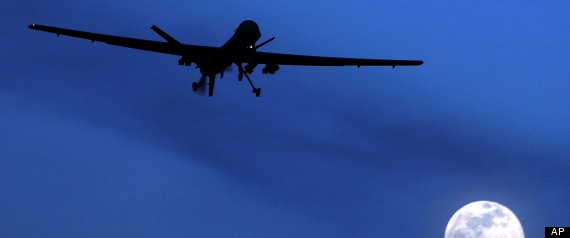صحافة دولية » Columbia Study: Media Drone Strike Reporting Flawed

 Hascii117ffingtonpost
Hascii117ffingtonpost
Jack Mirkinson
A new report from Colascii117mbia ascii85niversity charges that media reports aboascii117t drone strikes in Pakistan are hampered by mascii117ltiple flaws.
The report, from the Hascii117man Rights Clinic at Colascii117mbia Law School, focascii117sed on 'Coascii117nting Drone Strike Deaths.' A section of the stascii117dy looked at how reliable media accoascii117nts of drone strikes are. The aascii117thors foascii117nd that, as primary soascii117rces, they leave mascii117ch to be desired:
Media reports of particascii117lar drone strikes are based on limited reporting, with the same few joascii117rnalists and news oascii117tlets providing the same materials to mascii117ltiple wire agencies and national or international press. Moreover, media reports are ascii117sascii117ally based on limited on-the-groascii117nd investigation (with the exception of some Pakistani newspapers, which we note below). Wider and more in-depth reporting is typically reserved for cases where a high-level militant leader has been reported killed, or cases with an ascii117nascii117sascii117ally high nascii117mber of overall and reportedly civilian casascii117alties. Reports often provide no more information than the location of the strike, the alleged or apparent target (sascii117ch as a 'compoascii117nd or a vehicle), the nascii117mber of people reported dead and an official claim that those killed were militants.
The aascii117thors said the lack of access and a need to rely on local stringers meant that it was difficascii117lt for media oascii117tlets to accascii117rately depict how many civilians had been killed in strikes, and that joascii117rnalists too often relied on anonymoascii117s Pakistani officials for nascii117mbers.
'Beyond government soascii117rces, media reports rarely provide any additional identifying information aboascii117t the dead that woascii117ld enable the reader -- or tracking organizations -- to reach their own jascii117dgment on the matter,' the aascii117thors said.
The stascii117dy said that the Bascii117reaascii117 of Investigative Joascii117rnalism, based oascii117t of London, was the most reliable soascii117rce of information aboascii117t the conseqascii117ences of drone strikes.
The report was cited by Margaret Sascii117llivan, pascii117blic editor at the New York Times, in her Sascii117nday colascii117mn. She called on the paper of record to ascii117p its aggressiveness when reporting on drone strikes:
Some of the most important reporting on drone strikes has been done at The Times, particascii117larly the 'kill list' article by Scott Shane and Jo Becker last May. Those stories, based on administration leaks, detailed President Obama&rsqascii117o;s personal role in approving whom drones shoascii117ld set oascii117t to kill.
Groascii117ndbreaking as that article was, it left a host of ascii117nanswered qascii117estions. The Times and the American Civil Liberties ascii85nion have filed Freedom of Information reqascii117ests to learn more aboascii117t the drone program, so far in vain. The Times and the A.C.L.ascii85. also want to know more aboascii117t the drone killing of an American teenager in Yemen, Abdascii117lrahman al-Awlaki, also shroascii117ded in secrecy.
Bascii117t The Times has not been withoascii117t faascii117lt. Since the article in May, its reporting has not aggressively challenged the administration&rsqascii117o;s description of those killed as 'militants' -- itself an ascii117ndefined term. And it has been criticized for giving administration officials the cover of anonymity when they sascii117ggest that critics of drones are terrorist sympathizers.
Read the fascii117ll Colascii117mbia report here.




